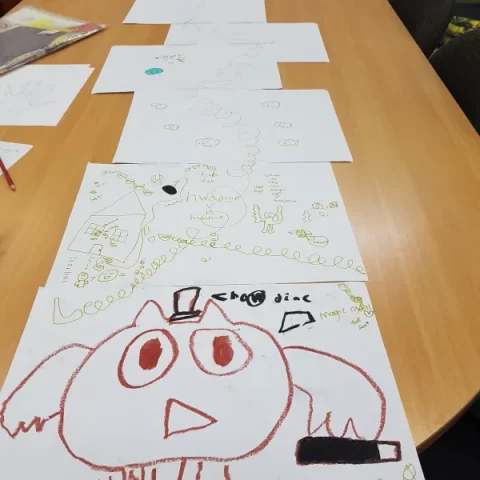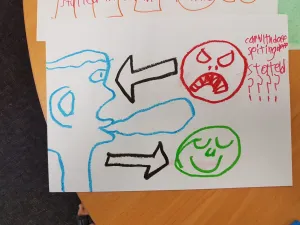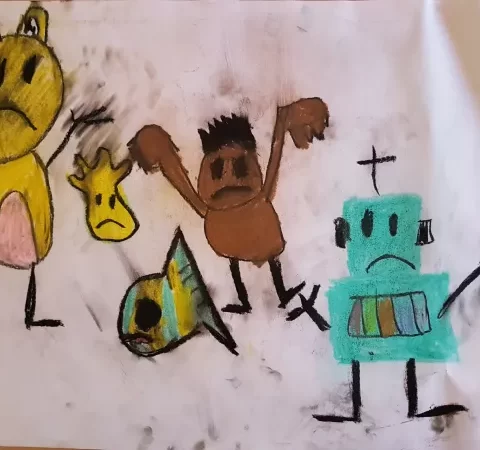Working with Children & Youth
As an Arts Psychotherapist, I find I’m working with more children and youth on the spectrum.
Quite a number of them have challenges with controlling anger and feeling frustrated and confused with all the ‘rules’ they feel they need to follow to fit in with society’s ‘norms’. High levels of anxiety, sensory issues and communication difficulties can also make their lives and their families’ lives confusing which can lead to isolation if not supported.
Some of the statements I often hear are:
- I don’t know why I’m different
- I don’t know how I feel
- Why do other kids bully me when I don’t even bother them?
- Why do I need to go to school? It’s boring.
Learning to understand these kids to help them through feeling socially awkward and feeling like they’re from another planet and at times too frightened to leave their home can sometimes leave me feeling confused myself. What I am learning though is to go into their inner world and see through their eyes and their perspective, then structure sessions according to what their goals are.
Because children and youths are naturally creative, they tend to engage really well exploring in the unfamiliar world that art psychotherapy can offer as a way to communicate and help make sense of things as they transition through different developmental stages.
One of the strategies I use that may be helpful for parents or carers, is encouraging them to do storytelling using drawings. Don’t be afraid to venture into the dinosaur age or the planet Zilo that’s made of slime!
Be curious!
Oh so what happened next? Why did the dinosaur run into the cave? What is he scared of? What made Choco leave his planet? How did he get to Earth? What does he need to feel safe?
Think about changing the way you communicate and maybe try using different words to promote children telling a story so you can understand their thinking processes, beliefs and values. I’ve been amazed when teenagers say, as a matter of fact, that they know the dinosaur or the fish (the metaphor) is themselves. Sometimes they can be one step in front of where we think they might be.




